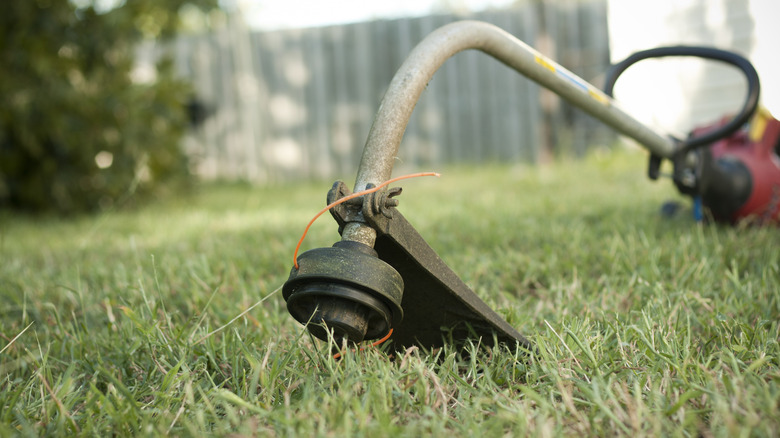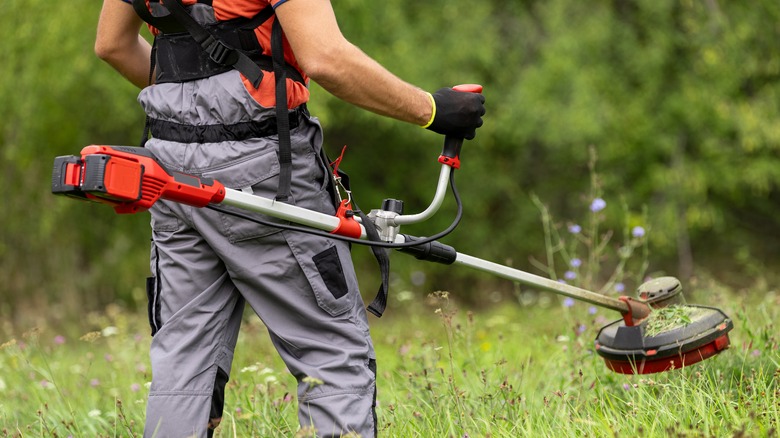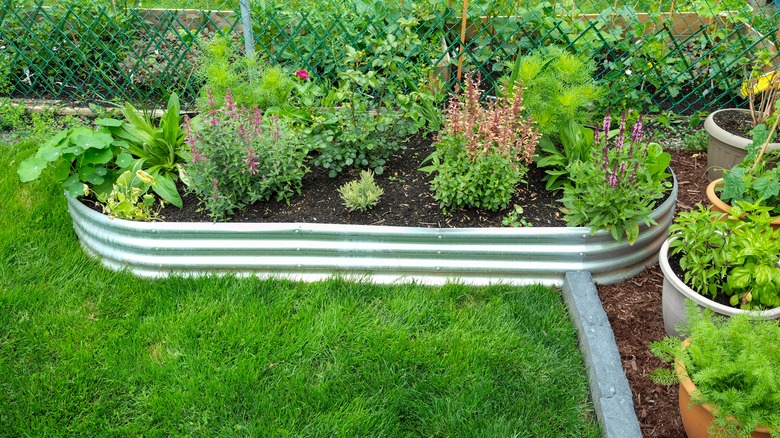Someone Weed-Whacked Your Summer Plants: When To Replant Them And When To Wait
We may receive a commission on purchases made from links.
Not everyone can tell the difference between a flower and a weed. Those beautiful vines just emerging from the ground look like passionflower to me, the bloom of which I eagerly await each year. However, to our lawn care company, they looked like weeds. After dying a little inside the first time, I asked them not to trim the vines growing inside my flower bed. Then, they did it again. (Yes, I'm installing fencing). It's not just them or that specific vine. I've lost other perennials and annuals to overzealous weed-whacking. Whether those plants need to be replanted or will come back on their own depends on how well-established they are, if they are annuals or perennials, and possibly the time of year they are cut down.
Although weed whackers can do a lot of damage very quickly -– like wipe out all the beautiful passionflower vines in my garden -– they aren't the only plant-killing culprit. On many occasions, I have zoned out while weeding my garden and pulled up the very plants I was trying to grow, leaving an annoying bare spot. These things happen, so it's helpful to know when you can wait or when you need to replant.
When perennial plants get weed-whacked
In many cases, your perennial plants should be fine if they get weed-whacked, but this depends on a few factors. In the case of my passionflower vines, they are well-established and got cut down early in the season, so they have plenty of time to keep growing. Unfortunately, they won't be as full as usual and I have to wait longer for the first bloom. Other situations are more tricky.
Woody plants that get damaged at the base, like trees and bushes, can suffer the effects of girdling, which prevents water and nutrients from being absorbed. Sometimes this process is used intentionally since there are benefits of girdling a tree versus cutting it down, but if your tree was accidentally and significantly damaged, it may not recover.
For some perennials, you may just have to wait to see if they return the next year. If they get cut down immediately after they emerge, they may not have time to store up energy in their roots for next year's shoots. This is particularly true for bulbs and rhizomes that are only above ground for a short time like tulips or daffodils.
The sad story of weed-whacked annuals
There's no way around it: If your freshly planted annual flowers got weed-whacked, it's time to head straight back to the garden center or nursery for replacements. But, there are some situations in which all might not be lost. If it's mid- or late-season, some particularly hardy plants may return from the remaining portion. A few favorites may even benefit from a midsummer trim. Impatiens and petunias can get leggy and stop producing blooms, but getting trimmed back to a few inches above the soil might just trigger them to produce full new growth for the remainder of the growing season. One can hope, anyway.
If you're like me and are leaving mowing and weed-whacking to the professionals, here are a few tips. You can ensure your flowers thrive by growing them in a hanging basket far away from eager weeders. Growing veggies and flowers in raised beds is also a good way to keep them protected. And, if there's one thing I've learned this year, don't assume that your flower beds are clearly marked. The rock edging around my passionflower vines was not enough to keep them protected from weed-whackers, so I'm putting up inexpensive wire garden fencing from Amazon to ensure the barrier is more obvious.


